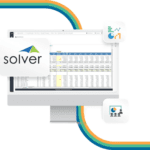Financial Modelling Risk is Inevitable
Managed well, it can create business value, but the alternative can be costly.
By Jeff Robson

Effective modelling to quantify and manage business risk is vital across all industry sectors.
Models can be Economic: examining strategic planning and project evaluation.
Such models are typically long term (5-30 years), contain a low level of detail, make many broad, high-level assumptions. They also tend to explore many scenarios, but have a lower level of accuracy.
Business Planning models are used for budgeting and forecasting. They are short-term (1-2 years), incorporate a high level of detail and use fewer assumptions and more historically-based forecasts. They tend to explore fewer scenarios, and have a higher level of accuracy.
Risk in itself is not necessarily bad; the danger is that risk is mismanaged, misunderstood or unintended.
Depending on your business, areas of uncertainty – risk can include, for example:
- Reserves of a resource or product
- Prices
- Production
- Project life or product lifecycle
- Exchange rates
- Processing or manufacturing and costs
- Costs of marketing and distribution
In this article, we focus on key business or project risk areas and consider: “How can risk be built in to the financial modelling process?”
Three financial modelling methods for dealing with such risks include:
- Sensitivities: what is the impact on a key output when you change one of the inputs?
- Scenarios: what is the impact on a group of outputs when you apply different sets of inputs?
- Monte Carlo analysis: what is the likely range of values a key output will take when you take into account the different amounts of uncertainty associated with key inputs?
Sensitivity analysis
This is analysis of a model under a potential range of different scenarios.
It typically focuses on one input and measures one output, incorporating ‘what-if’ and break-even analyses to determine what impact a variable has on the result.
Sensitivity analysis allows for uncertainty.
- It helps determine the key drivers, explores what happens if we’re wrong on one or more assumptions and determines a range of likely values.
Typically, outputs are displayed in ‘spider’ charts or tables.
Scenario analysis
Where sensitivity analysis examines one model output under a variety of different sets of inputs, scenario examines multiple outputs and multiple inputs.
Scenario analysis examines:
- What are the key outputs in different scenarios?
- How are the key outputs affected by changes in the inputs?
Outputs typically take the form of tornado charts, waterfall charts or tables.
Monte Carlo analysis
Monte Carlo analysis is a method of simulating sources of uncertainty that affect inputs, and calculating the likely output range.
Monte Carlo analysis:
- Takes into account different amounts of variation in the inputs to determine what is the likely range of the key output.
It uses multiple sources of uncertainty and estimates the range of numbers expected, but not the exact number.
So, we’ve examined risk, and how it can be accommodated in financial modelling. But now– the $64,000 (or more) question: is there a further level of risk in the financial models themselves?
See also “6 Signs Your Financial Model Needs Auditing”
Find out More
Simply contact Principal Business Analyst Jeff Robson on +61 8 621 8500 or +61 412 581 486 or leave your details below for a confidential discussion.







